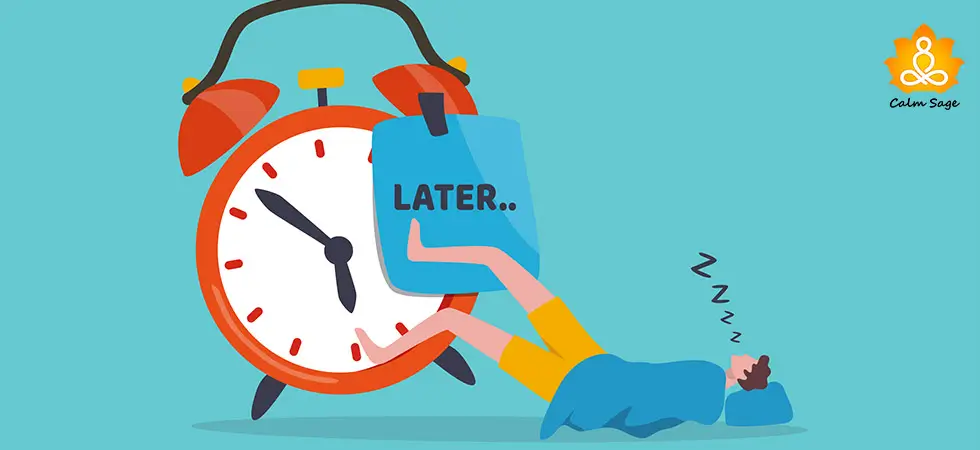Healthy Guilt vs. Unhealthy Guilt: How to Tell the Difference?

Guilt. It’s that gnawing feeling in your gut that whispers, “You’ve messed up”. We’ve all taken this road; from a forgotten birthday wish to harsh words we wish we could take back. But guilt is something that never fully leaves, is it? Moreover, this guilt comes in two flavors; healthy guilt and toxic guilt. So, which flavor to choose?
Today, we’re answering the age-old question; Healthy guilt vs. Unhealthy guilt. This article is going to guide you on how to distinguish between healthy guilt, a catalyst for growth, and its toxic cousin, a relentless voice of self-deprecation.
Let’s look at the signs of each, how you can work around these feelings, and how to find the path toward self-compassion and positive change.
Healthy Guilt: Your Inner Compass
Healthy guilt acts as your moral compass, subtly nudging you back on track when you’ve strayed too far. It comes from a genuine mistake or wrongdoing, prompting you to take responsibility for your actions.
It’s healthy guilt when;
- The guilt is focused on a particular action, not a general feeling of inadequacy. You know what you did wrong.
- The intensity of the guilt matches the severity of the situation. A forgotten phone call might not trigger the same level of guilt as a broken promise.
- The guilt inspires a change or a desire to make amends. You apologize to your partner, work hard to meet your missed goals, etc.
- The guilt leads you towards self-forgiveness and moving forward. Once you’ve taken responsibility and made amends, your guilt lessens and disappears, eventually.
Unhealthy or Toxic Guilt: The Shadow That Looms
Unhealthy or toxic guilt is like a relentless shadow that looms over your head, dragging you down a path of self-blame and negativity. It often stems from unrealistic expectations, past hurts, or a distorted sense of self.
It’s unhealthy guilt or toxic guilt, if;
- The guilt is unfocused and pervasive, making you feel generally bad about yourself rather than for an action.
- The intensity of the guilt is disproportionate to the situation. A minor mistake feels like a catastrophic setback.
- The guilt keeps you stuck in the moment, unable to move forward and make amends. You keep ruminating on the past instead of taking action in the present.
- The guilt causes you to engage in harsh self-criticism, attacking your self-worth instead of your actions. You keep thinking, “I’m a terrible person who doesn’t deserve forgiveness” even for the smallest mistakes.
Healthy Guilt vs. Unhealthy Guilt: The Difference
The major difference between these two flavors of guilt comes down to the source and impact of the guilt. Healthy guilt comes from a place of accountability, motivating you to learn and grow, whereas unhealthy guilt comes from a general feeling of inadequacy, leading to self-punishment and stagnation.
Healthy guilt focuses on specific mistakes. If you feel this, you recognize the mistake, acknowledge it, and apologize as a result. It might be uncomfortable but doesn’t lead to anxiety or depression.
On the other hand, unhealthy guilt feels like overflowing baggage of past regrets and unrealistic expectations. If you feel this, then you dwell on the mistake, beat yourself up for it, and can’t move forward. It can contribute to feelings of anxiety, depression, and low self-esteem.
Healthy guilt can look like this;
- I’ll call right now and apologize for the mistake.
- I made a mistake, but I can learn from it.
Unhealthy guilt can look like this;
- It’s too late to call now. They wouldn’t want to hear from me anyway.
- I’m such a failure. I always mess up and disappoint everybody.
Accepting Healthy Guilt…
Now that we know what healthy guilt looks like, here’s how you make the most of it;
- Acknowledge and accept. Don’t ignore the guilt. Listen to the message it’s giving you. What is it that it’s trying to tell you? Listen well; it might help!
- Take responsibility. Learn to own up to your mistakes and actions without dwelling or ruminating on them too much. It doesn’t help at all.
- Make amends. If you can, apologize for your actions and take steps to repair any harm caused to the other person. Amends can go a long way in healing yourself, too.
- Be kind to yourself. Most of all, forgive yourself. Know that everyone makes mistakes. So, learn from your mistakes and move forward in life.
Managing Toxic Guilt…
Now, unhealthy guilt needs different kinds of tools to manage. Here’s how you can take care of toxic guilt;
- Challenge negative thoughts. Think about all the distorted beliefs that fuel your guilt. Are you setting unrealistic expectations? Can you do something to change them? If yes, do it!
- Be kind and compassionate. Just like you would a friend, treat yourself with the same kindness and compassion.
- Forgive yourself. Let go of the past. You can’t change the past, but you can choose to either live in it or move forward.
- Seek support. If you can’t manage toxic guilt on your own, then seek the help of a counselor or a therapist who can help you develop healthy coping skills and mechanisms.
Know, self-compassion is not the same as self-indulgence. It’s about accepting yourself, acknowledging your flaws, and choosing to learn from your experiences.
The idea isn’t to become completely guilt-free. Healthy guilt can help in maintaining healthy relationships and becoming a well-rounded person. What you need to do is to distinguish between the voices of guilt and respond in a way that brings growth and self-compassion.
The impact of healthy guilt extends far beyond you. When you take responsibility for your actions and strive to do better, it creates a ripple effect. You inspire others to do the same and become more accountable.
Wrap Up…
Guilt is an inevitable part of the human experience. It’s not about absolving guilt entirely, but about learning how to move around the complexities of guilt. By understanding the difference between healthy guilt and unhealthy guilt, and using the tools to embrace and manage it respectively, you can transform this burden into a catalyst for growth and positive change.
I hope this article helped you understand healthy guilt vs. unhealthy guilt, and how you can move forward. Let us know your thoughts in the comments below.
Take Care!




















